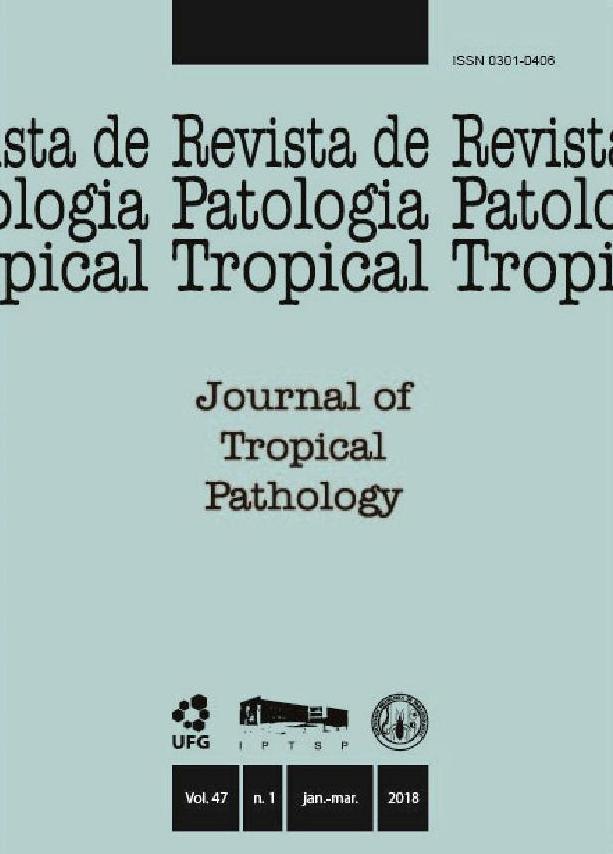PRESENCE OF ENTEROPARASITES IN THE ENVIRONMENT AND THE RESIDENT POPULATION IN A RURAL COMMUNITY IN SANTO ANTONIO DE JESUS IN THE RECONCAVO DA BAHIA, BRAZIL
DOI:
https://doi.org/10.5216/rpt.v47i1.52354Palavras-chave:
Environment, soil, contamination.Resumo
Studies show environmental contamination as a decisive factor for the perpetuation of the epidemiological triad of infection by parasites, posing a risk to human health. This work identified parasitic contamination in peridomestic soils, enteroparasite infection in humans and domestic animals in the Riacho Dantas and Rio do Onha, rural communities of Santo Antônio de Jesus (Bahia, Brazil). Analyses were performed in 53 homes, with soil samples collected
in four points as well as collection of human and domestic animals feces from July to October 2015. Soil samples as well as human and domestic animal feces were analyzed. For the analysis of human fecal samples, four methods were used, including spontaneous sedimentation, Baermann-Moraes, Kato-Katz and Graham. For animal fecal samples three methods were used: spontaneous sedimentation, Willis and Rugai. For soil samples, two methods were
used: spontaneous sedimentation and Rugai. Of the 636 samples of soil analyzed, 68.7% were positive for some parasitic form, especially non-ciliated protozoa, ciliate protozoa; adults and larvae of the nematodes and hookworms. Of the 144 samples of human feces, 75% were positive, especially for: Endolimax nana, Entamoeba coli, hookworms, Giardia duodenalis,
Entamoeba histolytica/E. dispar and Enterobius vermicularis. Of the 21 animal feces samples, 85.7% were positive, especially for the genera Ancylostoma, Toxocara, Trichuris and Giardia. The studied soil samples presented biological contaminants (for example, Toxocara and Ancylostoma) some of which pathogenic for humans and domestic animals. The lack of information regarding the care of domestic soil and direct contact with contaminated soil enabled the detection of parasites with hosts in this environment.
Downloads
Downloads
Publicado
Como Citar
Edição
Seção
Licença
The manuscript submission must be accompanied by a letter signed by all authors stating their full name and email address, confirming that the manuscript or part of it has not been published or is under consideration for publication elsewhere, and agreeing to transfer copyright in all media and formats for Journal of Tropical Pathology.

